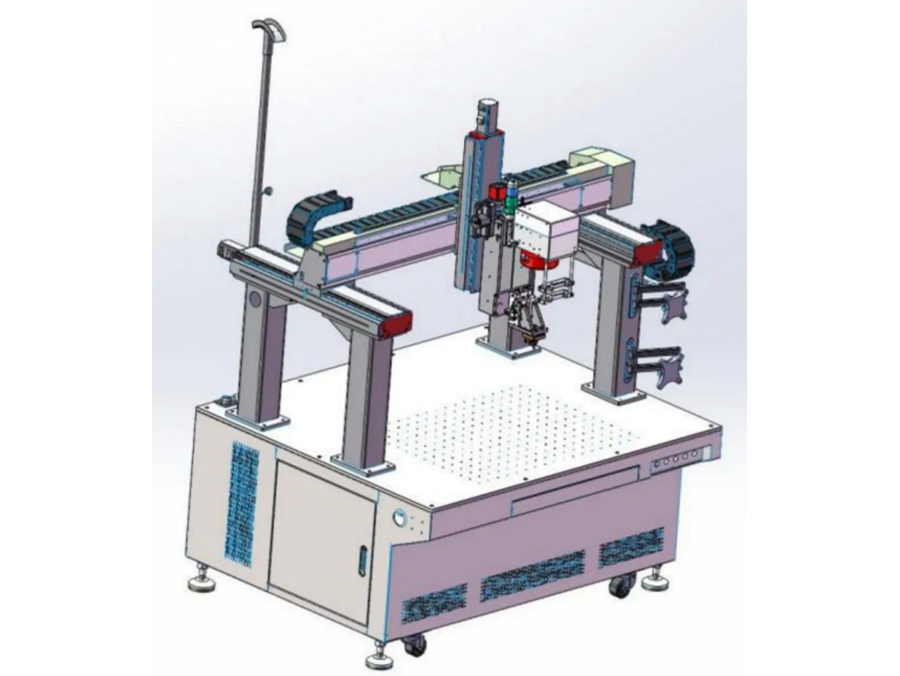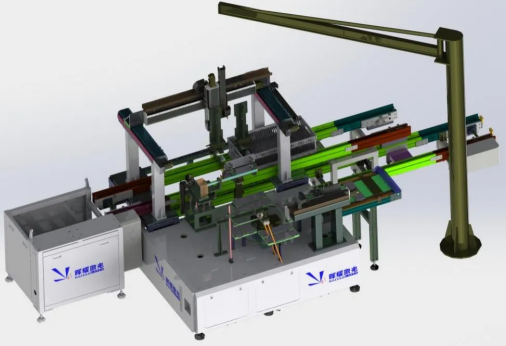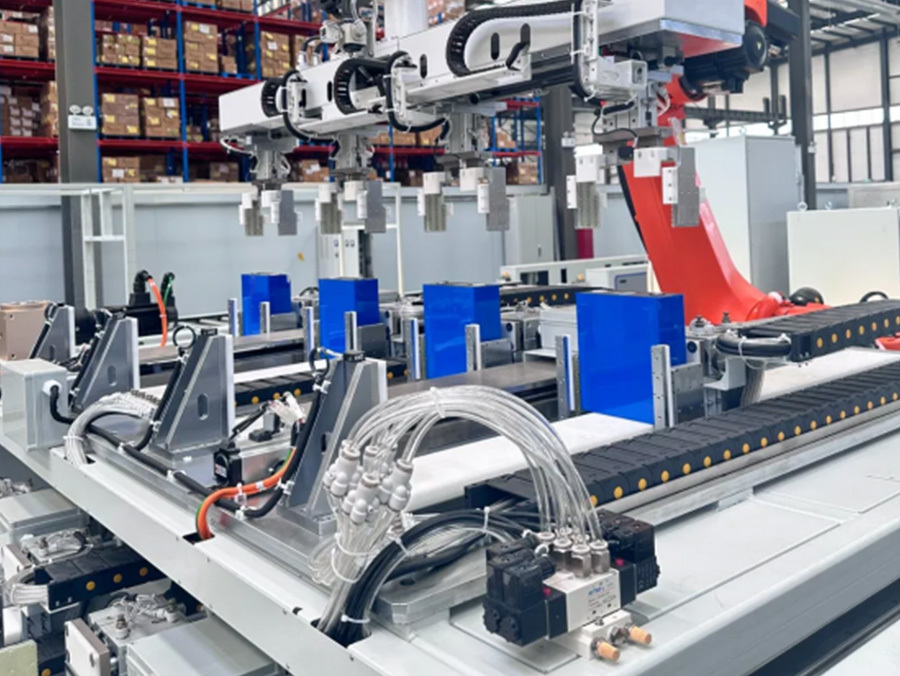Solution

MES Solution for ESS Smart Factory
- Product description
-
- Commodity name: MES Solution for ESS Smart Factory
- Commodity ID: 储能电池智能工厂MES系统
The MES (Manufacturing Execution System) for ESS Smart Factory Solution is a comprehensive software platform designed to optimize production processes in energy storage system (ESS) manufacturing facilities.
1. Overview
The MES (Manufacturing Execution System) for ESS Smart Factory Solution is a comprehensive software platform designed to optimize production processes in energy storage system (ESS) manufacturing facilities. This system integrates seamlessly with factory hardware and software, providing real-time monitoring, traceability, data analytics, and process control to ensure efficiency, quality, and scalability.
2. Key Features
- Real-Time Monitoring: Tracks production, equipment status, and material flow in real time.
- End-to-End Traceability: Provides detailed records of production from raw materials to finished products.
- Data Analytics and Reporting: Offers actionable insights for process optimization and decision-making.
- Seamless Integration: Interfaces with ERP, PLM, SCADA, and other systems.
- Scalability: Adapts to varying production scales and product lines.
3. Technical Specifications
3.1 System Architecture
- Platform: Cloud-based or on-premises deployment options.
- Core Modules:
- Production Management.
- Quality Management.
- Equipment Management.
- Inventory and Logistics Control.
- Data Analysis and Reporting.
- Traceability and Genealogy.
- Database: Supports MySQL, PostgreSQL, SQL Server, or Oracle.
3.2 Hardware Requirements
- Server Requirements:
- CPU: Minimum 8-core, 3.0 GHz.
- RAM: 32 GB or more.
- Storage: SSD with 2 TB capacity.
- Network: 1 Gbps Ethernet.
- Client Devices:
- Supported on PCs, tablets, and mobile devices.
- Browser Compatibility: Chrome, Edge, Firefox (latest versions).
3.3 Functional Specifications
3.3.1 Production Management
- Work Order Tracking: Real-time tracking of work orders and production stages.
- Process Control: Monitors compliance with predefined manufacturing processes.
- Resource Allocation: Ensures optimal utilization of machines and labor.
3.3.2 Quality Management
- Defect Detection: Logs defects and automates alerts for corrective actions.
- SPC (Statistical Process Control): Monitors key quality parameters to ensure consistency.
- Inspection Management: Configurable workflows for inline and end-of-line inspections.
3.3.3 Equipment Management
- Predictive Maintenance: Utilizes machine data to predict and schedule maintenance.
- Downtime Analysis: Tracks and categorizes downtime to improve OEE (Overall Equipment Effectiveness).
- Integration: Interfaces with IoT devices for real-time equipment data collection.
3.3.4 Traceability
- Batch and Serial Tracking: Monitors material flow across production lines.
- Genealogy: Links components and processes to finished products for complete traceability.
- Regulatory Compliance: Generates audit trails for certifications and reporting.
3.3.5 Inventory and Logistics Control
- Material Flow Optimization: Real-time updates on inventory levels and usage.
- Warehouse Management: Supports raw material, WIP (Work-in-Progress), and finished goods tracking.
- Supply Chain Integration: Interfaces with ERP systems for seamless material management.
3.4 Communication Protocols
- Supported Protocols: OPC UA, Modbus, MQTT, RESTful API, and WebSocket.
- BMS Integration: Supports CAN, RS485, and Ethernet communication.
- ERP/SCADA Integration: Prebuilt adapters for SAP, Oracle, and Siemens systems.
3.5 Security
- Authentication: Multi-factor authentication (MFA) for secure access.
- Encryption: AES-256 encryption for data transmission and storage.
- Backup and Recovery: Automated backup schedules and disaster recovery protocols.
3.6 Scalability and Performance
- Concurrent Users: Supports up to 500 simultaneous users.
- System Load: Capable of managing 1 million production data points per day.
- Customization: Flexible modules for future expansion and additional functionalities.
3.7 Data Analytics and Reporting
- Real-Time Dashboards: Interactive dashboards for KPIs, including yield rates, cycle times, and OEE.
- Custom Reports: Configurable templates for production, quality, and inventory reporting.
- AI Integration: Optional machine learning algorithms for predictive insights.
4. Applications
- ESS Battery Production: Enhances production efficiency for energy storage systems.
- Quality Assurance: Ensures compliance with industry standards.
- Traceability: Simplifies audits and certifications for regulatory compliance.
- Operational Optimization: Identifies bottlenecks and streamlines workflows.
5. Maintenance and Support
- Software Updates: Regular updates for security patches and new features.
- Technical Support: 24/7 support via phone, email, and remote access.
- Training: Comprehensive training for operators and administrators.
Key words:
MES Solution for ESS Smart Factory
Series of Products
Huiyao Laser is a leading battery laser welding machine manufacturer offering professional battery pack and battery module welding solutions for many fields, such as energy storage systems of research and development machines, as well as complete assembly lines for module and battery pack production.
Comprehensive Pouch Battery Module PACK Automatic Production Line for Efficient Output 12PPM is designed for the modular production of solid-state batteries, featuring high automation, flexibility, and integrated quality control (QC) systems. It ensures efficient production while maintaining strict quality standards. The line is suitable for electric vehicles, energy storage systems, consumer electronics, and more, supporting the production of various specifications of solid-state battery modules.
Comprehensive Pouch Battery Module PACK Automatic Production Line for Efficient Output 12PPM is designed for the modular production of solid-state batteries, featuring high automation, flexibility, and integrated quality control (QC) systems. It ensures efficient production while maintaining strict quality standards. The line is suitable for electric vehicles, energy storage systems, consumer electronics, and more, supporting the production of various specifications of solid-state battery modules.
Huiyao Laser Fully-Automated Energy Storage Prismatic Battery Module PACK Line
Huiyao Laser Energy Storage Automatic Prismatic Battery Module PACK Line is an efficient, intelligent and customized automated production line, specifically designed for the energy storage field. It is suitable for application scenarios such as large - scale energy storage systems, home energy storage, and industrial energy storage. This production line integrates advanced laser welding technology, automated assembly systems, and intelligent detection equipment, aiming to provide customers with the production of battery modules with high consistency and high reliability.
Get a Free Quote
PLEASE LEAVE YOUR MESSAGE AND WE WILL CONTACT YOU AS SOON AS WE RECEIVE IT!
FAQ
Q
How do you ensure consistent weld quality in the assembly of Prismatic battery packs?
A
Q
What are the best practices for cell alignment and stacking in a Prismatic battery PACK assembly?
A
Copyright © Huiyao Laser Technology (Luoyang) Co., Ltd. Has supported ipv6




